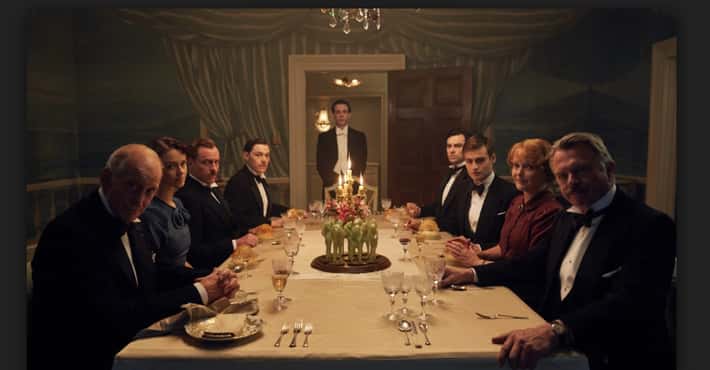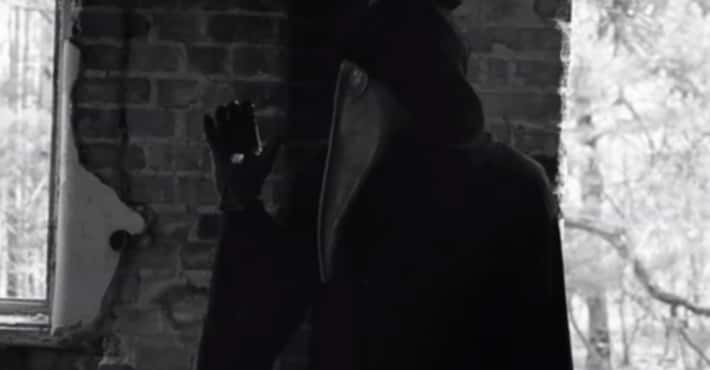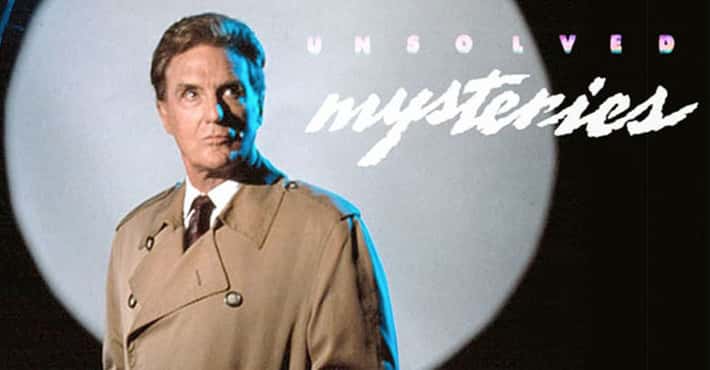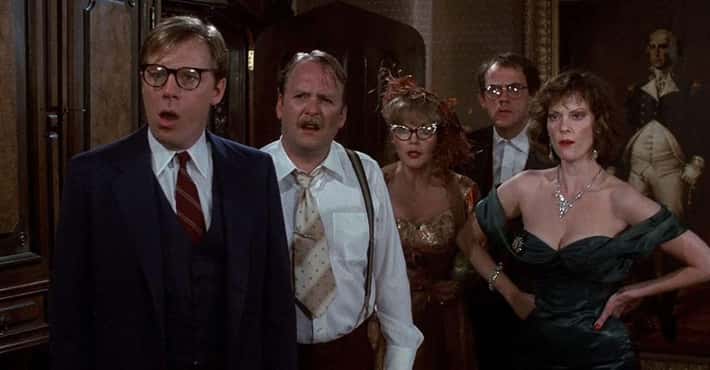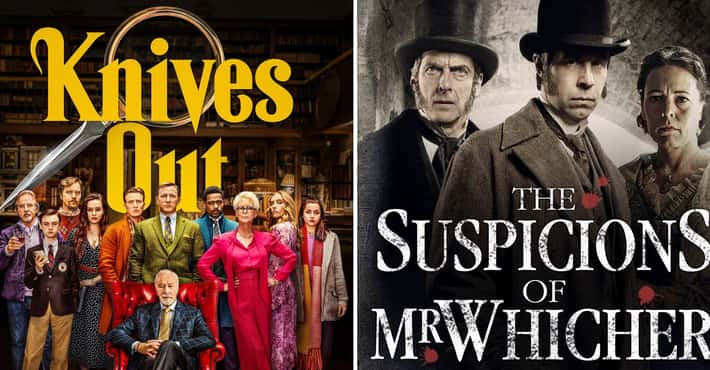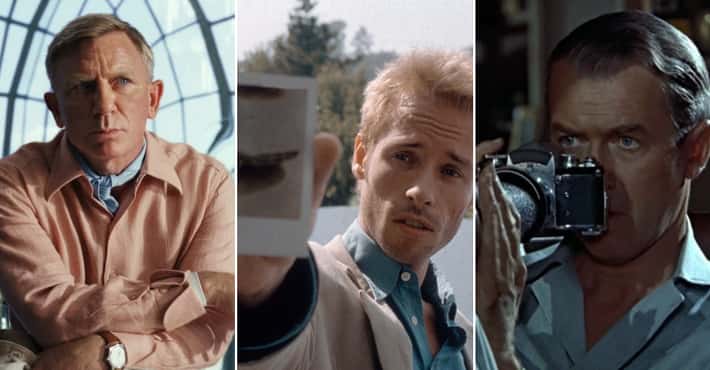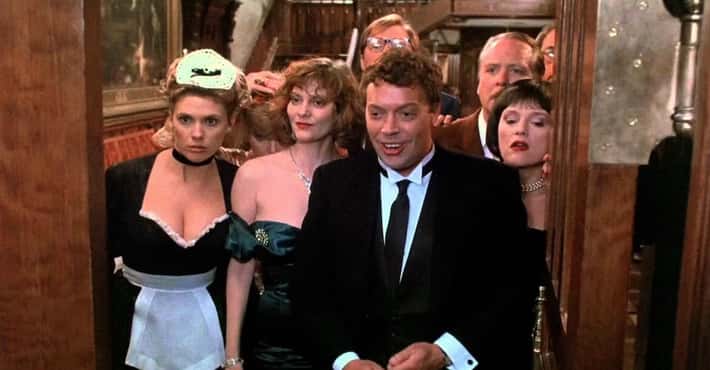What Really Happened To Stieg Larsson?
His Publisher Released The Novels Posthumously
Larsson was working at Expo magazine in 2004 when he learned that the Millennium trilogy had been sold to a publisher. There was immediate interest from film producers, and it appeared Larsson was about to enjoy the fruits of his labor.
On November 9, Larsson was under a deadline for his magazine and rushing to complete it. When he arrived at work, the elevator was out of order, so he decided to walk up seven flights of stairs. He collapsed as soon as he reached Expo's office.
Reportedly, his last words were, "I'm 50, damn it."
- Photo: Penguin Canada
He Ran An Anti-Hate Magazine
Larsson started Expo magazine in 1995, and it became well-known in Sweden despite initial lackluster sales due to threats from extremists. The publication studied and surveyed "anti-democratic, right-wing extremist, and racist tendencies in Swedish society."
After the printer's office that put out the magazine got vandalized, the publication garnered widespread attention.
Some Believe His Death Was Not An Accident
Almost immediately after Larsson collapsed, rumors began to swirl about the writer being a target because his magazine intended to out right-wing extremists in Sweden. Speculators suggested the person who shot Prime Minister Palme in 1986 - an event Larsson was fascinated with - could have poisoned Larsson.
Or perhaps his death was connected to the editor of a neo-Nazi magazine that had published Larsson's address, telephone number, and photograph as a threat.
Larsson's British publisher, Christopher MacLehose, accepts the likelihood that Larsson had an ordinary heart attack. He told Vanity Fair:
Sixty cigarettes a day, plus tremendous amounts of junk food and coffee and an enormous workload would be the culprit. I gather he'd even had a warning heart murmur.
Still, I have attended demonstrations by these Swedish right-wing thugs, and they are truly frightening. I also know someone with excellent contacts in the Swedish police and security world who assures me that everything described in the Millennium novels actually took place. And, apparently, Larsson planned to write as many as 10 in all. So you can see how people could think that he might not have died but been "stopped."
Larsson Acted As If He Was Always In Danger
Even before Expo existed, Larsson - an investigative journalist focused on exposing far-right extremism - allegedly felt threatened. He had a thick, vault-like door installed at his home and took different routes to and from work daily; nothing in his routine was ever the same.
No one knew whether his actions were the result of paranoia or real threats, but they proved warranted on more than occasion.
His Partner Also Thought He Was A Possible Target
Due to Larsson's political image, Eva Gabrielsson thought her late boyfriend was a potential subject of foul play. She said, "A lot of people would have liked to get rid of Stieg. I always thought I would hear one day that he had been killed."
Gabrielsson and Larsson met as teens and stayed together until his death. In 1983, they started thinking about marriage, but decided to put it off. They never revisited the idea because of Larsson's outspoken stance on right-wing extremism - the couple was under constant threat, and getting married would have required them to publish their address under Swedish law.
Gabrielsson explained, "It was absolutely impossible for us to go back to the wedding plans we had. We had to take more and more security measures."
A Few Threats Were Made On Larsson's Life
Larsson's paranoia was justified - there were a few alleged attempts on his life. One time, a group of people armed with baseball bats waited for him outside his office, prompting him to exit through the back door to ensure his safety.
Another time, Larsson received a call warning him someone was going to end his life that day. He noticed a suspicious man with a bag sitting across the street from his office. Aware that the police wouldn't believe he was a target, Larsson anonymously informed local law enforcement that the man was planning to rob a bank. When authorities apprehended the man, they found several guns in his bag.
And when a Swedish SS veteran was arrested for a political murder, Larsson's name and passport photo were found in his apartment. Gabrielsson explained the incident:
In 1993, members of a right-wing group were arrested for telling people to kill Stieg. I went to the police, and I told them: we need secure identities. They agreed straight away. They knew the threat.
He Had A Dark Secret That Influenced The Character Of Lisbeth Salander
Larsson seemed to find himself in dangerous situations throughout his life. When he was 15, he reportedly witnessed a girl getting attacked, but he didn't intervene. His friend Kurdo Baksi recounted the incident in his own book, Stieg Larsson: Our Days in Stockholm.
The Millennium series was Larsson's "way of apologizing" to the girl, according to Baksi. He said, "Stieg told me, 'I need to write this book, It's really important to me... I felt terrible about what I had seen.'"
Larsson Lived Life Under The Radar As Much As Possible
Throughout their relationship, Larsson and Gabrielsson were cautious not to draw attention to themselves. They went as far as to make sure to sit with their backs against the wall in public places like cafes.
Their answering machine recorded threats they received from right-wing extremists: "You Jew f*cker... traitor, we'll tear you apart... and we know where you live." At one point, the couple even received bullets in the mail.
- Photo: Vintage Books
He Wrote His Novels In Hopes Of Commercial Success, But Didn't Shy Away From His Beliefs
Aside from being in poor health, overworked, and paranoid about threats from the far right, Larsson had little money and allegedly relied on Gabrielsson for financial help. He once told a friend, "I'm fed up with having to go around with my hat out, begging for money for Expo. Nobody cares, nobody gives us any money. I need a one-time solution."
Family members encouraged him to write commercial fiction, and in 2002, he finally relented. While vacationing with Gabrielsson near Stockholm, Larsson began what became the Millennium trilogy.
The novels didn't shy away from politics. He made the victims in The Girl With the Dragon Tattoo Jewish. As Gabrielsson said, "The killer is acting for political reasons, within the Nazi ideology, so he is actually committing political murders... The first book shows the effects of an ideology on a family and its women."
Larsson's original title for the series was Men Who Hate Women - a bold statement that complements the story's unsubtle political commentary.
He Did Not Leave A Will
Larsson did not leave a will, likely for the same reason he did not marry Gabrielsson - to protect her. There was no paper trail linking the couple legally or financially, allowing Gabrielsson to evade the same threats Stieg faced.
All the profits from the Millennium trilogy went to Larsson's immediate family. According to Gabrielsson, "It would have been beyond Stieg's worst nightmares to know that someone other than me was handling the rights to his books and to know that the money we planned to invest is gone."
Apparently, Larsson did leave behind a sealed envelope before a trip to Africa in 1977 that read: "Contains my will. Do not open before I die." The will allegedly leaves everything to the Socialist Party of Umea, Sweden. But since it was not witnessed, it is not applicable by law.
Some People Believe He Wasn't The Author Of The 'Millennium' Trilogy
Gabrielsson does not deny working with Larsson on the Millennium series, but maintains that her late partner wrote the novels himself. Some suspect this is not the case, though. Colleague Anders Hellberg said Larsson was not a good enough writer to pull off a best-selling series.
Hellberg worked with Larsson at TT (the Swedish version of the Associated Press) and thought Larsson's writing wasn't up to par:
It was impossible. Every professional writer knows these things: you look at a text, and you can see this is terrible. Some texts are a little messy, but you can work them out; but there nothing was good - not the syntax, the way of putting things, nothing.
Larsson's friend Kurdo Baksi agreed with Hellberg. When Larsson asked Baksi to read his first book's manuscript, he declined, saying, "I thought he was joking. His talent was for writing about Stalin, Lenin, Bush - not for thrillers."
He Left Behind An Unfinished Fourth Book
After Larsson's death, Gabrielsson obtained his laptop, which supposedly contains an unfinished novel - what would have been the next in the Millennium series. Larsson's friend John-Henri Holmberg believes the late writer may have left behind enough material for a fifth or even sixth book, as he often worked on more than one project concurrently.
Larsson's father and younger brother inherited Larsson's half of the apartment he shared with Gabrielsson, and they offered her full ownership in exchange for the laptop and its contents. She declined, calling the offer extortion. The Larssons later proposed a settlement of about $2.6 million, but Gabrielsson didn't respond.
Larsson reportedly told his brother that the manuscript on his computer was close to being finished. But it was not the fourth book in the series - it was the fifth, which Larsson said was "more fun to write."
Amid the family's dispute with Gabrielsson, the Larssons have contended that the unfinished manuscript will never be published.
- Photo: Orion
Gabrielsson Wrote A Book About Larsson And Is Still Somewhat Reclusive
In 2011, Gabrielsson released Stieg and Me: Memories of My Life With Stieg Larsson after reviewing her diaries of their life together. The book recounts their 30-year relationship through a series of descriptive vignettes. Gabrielsson commented on her experience:
After [compiling my memories of Stieg] for the better part of a year, I realized this was the kind of book, full of grief and loss, I would have wanted when he died... I could get down on paper, without distortions and misconceptions, the events after his death, so I won't have to answer these questions for the rest of my life. I don't have the time!
Due to the threats she received when she and Larsson were together, Gabrielsson is still reluctant to let people know where she lives.
- Photo: Vintage Crime/Black Lizard
Larsson's Family Chose A Writer To Continue The Series
Since Gabrielsson claims she has the only copy of the manuscript Larsson was working on before his death, the late author's brother and father chose Swedish journalist David Lagercrantz to continue writing novels in the series. Lagercrantz wrote The Girl in the Spider's Web and The Girl Who Takes an Eye for an Eye, both books that have allowed Lisbeth Salander to live on long after her creator.
As for his understanding of Larsson's inspirations, Lagercrantz commented that he discovered Larsson was a fan of superheroines in comic books. He said, "First we seek our heroes in old myths, and now we seek them in popular culture."









